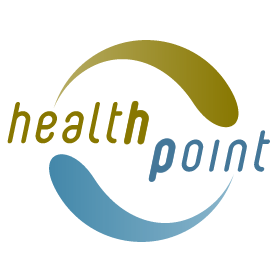South Auckland > Public Hospital Services > Te Whatu Ora – Health New Zealand Counties Manukau >
Bone Density Service | Counties Manukau | Te Whatu Ora
Public Service, Older People's Health
Osteoporosis
Bone is living tissue which is constantly undergoing remodelling with new bone being formed and old bone being broken down. The tough outer core of bone surrounds an inner 'spongy' area of interlacing bone. This arrangement of bone gives it great strength. Bones are always being remodelled and rebuilt to keep them strong.
In osteoporosis, the harder outer shell of bone slowly thins out, whereas the inner network of bone undergoes more rapid breakdown. Although the size of the bone stays the same it becomes a lot thinner and weaker on the inside, in medical terms you lose 'bone mass'. Losing calcium from your bones is a natural part of the aging process. As you grow older, particularly after menopause, the body takes calcium from your bones more quickly than you can replace it.
Osteoporosis is not painful but it makes your bones more prone to breaking (fracture). Women are more likely than men to suffer from osteoporosis and as you get older you are more likely to have it.
http://osteoporosis.org.nz/resources/brochure-all-about-osteoporosis/
Tests
Osteoporosis can be diagnosed by measuring bone mineral density (BMD). At the Middlemore Bone Density Clinic, the bone densitometry examination is a DEXA scan. DEXA is the state-of-the-art method for detecting osteoporosis. Research has shown it to be more reliable than other methods i.e. CT or ultrasound. The examination is painless and delivers only a small dose of x-rays. We routinely check the bone density of the spine and hip; sometimes the wrist is used to measure bone density. A copy of the results will go to your referring doctor with a written interpretation by one of the specialists. For more about the DEXA examination click here.
Treatment
Exercise - such as running, walking, tennis, aerobics and dancing. These are called weight bearing exercises and are best for your bone health.
Sunshine - vitamin D is important for absorption of calcium. You normally get enough vitamin D from the action of sunlight on your skin, even on an overcast day. Foods which contain vitamin D include fish oils, sardines, tuna, eggs, butter and liver.
Diet - you need a good intake of calcium throughout life. This is an easy and natural way to help slow bone loss by providing your body with the calcium it needs. Dairy products including cheese, yoghurt, ice cream and milk provide the great majority of the calcium in the diet.
Calcium Supplements - if you don't like or can't eat enough calcium rich foods, then taking a regular calcium supplement may be best for you. They need to be prescribed by your doctor.
Vitamin D (Calciferol) - is prescribed particularly for those with vitamin D deficiency.
Hormone Replacement Therapy (HRT) - is made from hormones similar to those produced in the body before the menopause. Oestrogen or oestrogen and progesterone can be used.
Other Treatments - there are other methods of treating osteoporosis for those people not suited to HRT. These include Bisphosphonates e.g. Etidronate (Didronel), Alendronate (Fosamax) or Calcitonin, Rocaltrol and anabolic steroids. Zoledronate (as an infusion) is another treatment method for patients intolerant of oral bisphosphonates, and although CMDHB no longer provides this service to outpatients, your GP will be able to discuss this treatment option with you. Please refer to the attached information sheet regarding Zoledronate administration for outpatients in the community.
Document Downloads
- Zoledronate Infusion Centres (PDF, 34.2 KB)
- Osteoporosis Questionnaire (PDF, 52.4 KB)
- Love your Hips (PDF, 3.3 MB)

